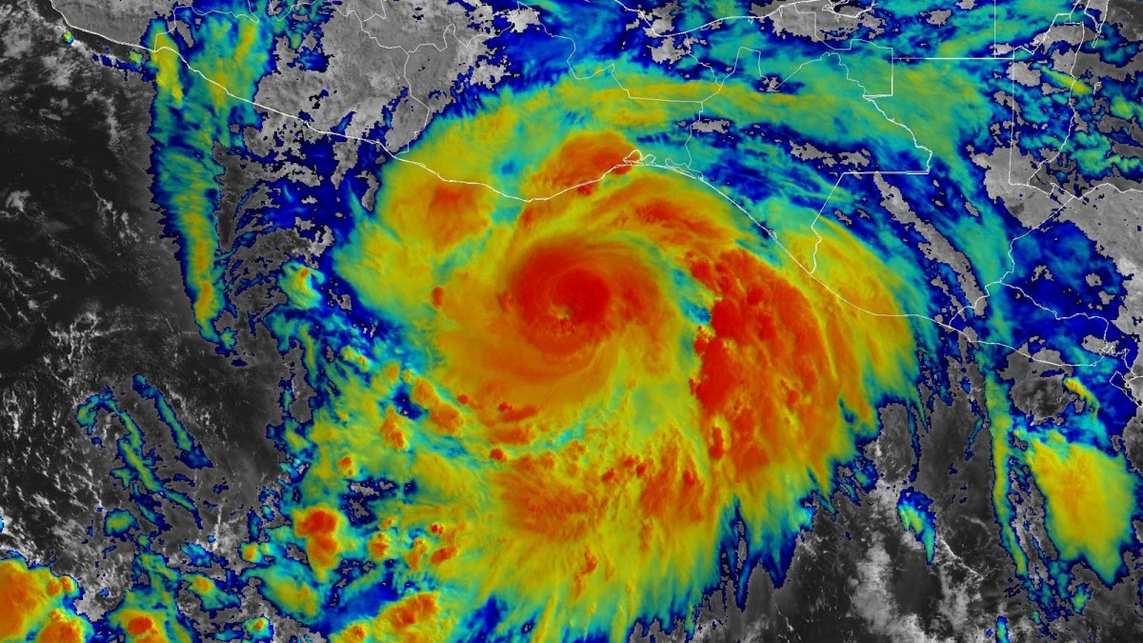Hurricane Erick, rapidly intensifying into a powerful Category 3 storm, slammed into Western Mexico, leaving a trail of devastation in its wake. The hurricane’s unexpected strength caught many off guard, highlighting the unpredictable nature of these powerful weather systems and the importance of robust disaster preparedness.
The Fury of Erick: A Rapid Intensification
What initially appeared to be a relatively moderate tropical storm quickly transformed into a major hurricane, showcasing the frightening speed at which these storms can develop. This rapid intensification is a significant concern for meteorologists, as it provides less time for preparation and evacuation efforts. Erick’s intensification was likely fueled by unusually warm ocean waters and favorable atmospheric conditions in the eastern Pacific. The storm’s sustained winds reached speeds of over 115 mph, making it a formidable threat to coastal communities.
Key Characteristics of Erick’s Rapid Development:
- Unusually warm ocean surface temperatures: The warmer-than-average ocean water provided ample energy for the storm to rapidly intensify.
- Favorable atmospheric conditions: Low wind shear and ample moisture in the atmosphere allowed the storm to organize and strengthen quickly.
- Lack of disruptive weather systems: The absence of other weather systems competing for energy allowed Erick to concentrate its power.
Impact and Devastation: A Look at the Damage
The full extent of the damage caused by Hurricane Erick is still being assessed, but early reports paint a grim picture. The hurricane’s powerful winds caused widespread destruction, leaving behind damaged infrastructure, downed power lines, and flooded streets. Coastal areas bore the brunt of the impact, with powerful storm surges and high waves inundating low-lying communities.
Significant Impacts of Hurricane Erick:
- Widespread structural damage: Homes and businesses were damaged or destroyed by high winds and storm surges.
- Power outages: Extensive power outages affected a large population, leaving many without electricity and essential services.
- Flooding: Heavy rainfall led to widespread flooding, impacting transportation networks and causing significant disruption.
- Agricultural losses: Crops and livestock were severely affected by the storm’s strong winds and heavy rainfall.
- Casualties: Unfortunately, there have been reports of casualties, with the exact numbers still emerging as search and rescue efforts continue.
The Aftermath: Recovery and Relief Efforts
In the wake of Hurricane Erick’s landfall, immediate recovery and relief efforts are underway. Mexican authorities are mobilizing resources to assist affected communities, providing essential supplies, medical assistance, and temporary shelter. International organizations are also stepping in to offer support, coordinating aid delivery and assisting in the long-term reconstruction process.
Challenges in the Recovery Process:
- Accessibility: Damaged infrastructure is hindering access to affected areas, making it difficult to deliver aid and assess the full extent of the damage.
- Communication disruptions: Power outages and damaged communication lines are hampering communication efforts, making coordination challenging.
- Long-term recovery needs: The rebuilding process will be lengthy and expensive, requiring significant resources and international cooperation.
Lessons Learned and Future Preparedness
Hurricane Erick serves as a stark reminder of the devastating potential of these powerful storms. The rapid intensification of the hurricane underscores the importance of continuous monitoring and early warning systems. Improved forecasting techniques and advanced warning systems are crucial for providing adequate time for evacuation and preparedness measures.
Key Takeaways and Future Considerations:
- Strengthening early warning systems: Investing in more accurate and timely forecasting models is critical for providing sufficient warning to at-risk communities.
- Improving community resilience: Implementing community-based disaster preparedness programs will equip communities with the knowledge and resources to respond effectively to future storms.
- Investing in robust infrastructure: Building more resilient infrastructure, including stronger buildings and improved drainage systems, can mitigate the impact of future hurricanes.
- International cooperation: Effective disaster response requires strong international collaboration and support, especially for countries with limited resources.
Conclusion: A Call for Action
Hurricane Erick’s devastating impact on Western Mexico highlights the urgent need for increased preparedness and resilience to extreme weather events. While the immediate focus is on rescue, relief, and recovery, we must learn from this experience to better protect vulnerable communities in the future. This requires a multi-faceted approach involving advanced forecasting technologies, community engagement, and international cooperation to mitigate the risks associated with these powerful hurricanes.
Stay informed, stay safe, and support the ongoing relief efforts for those affected by Hurricane Erick.










